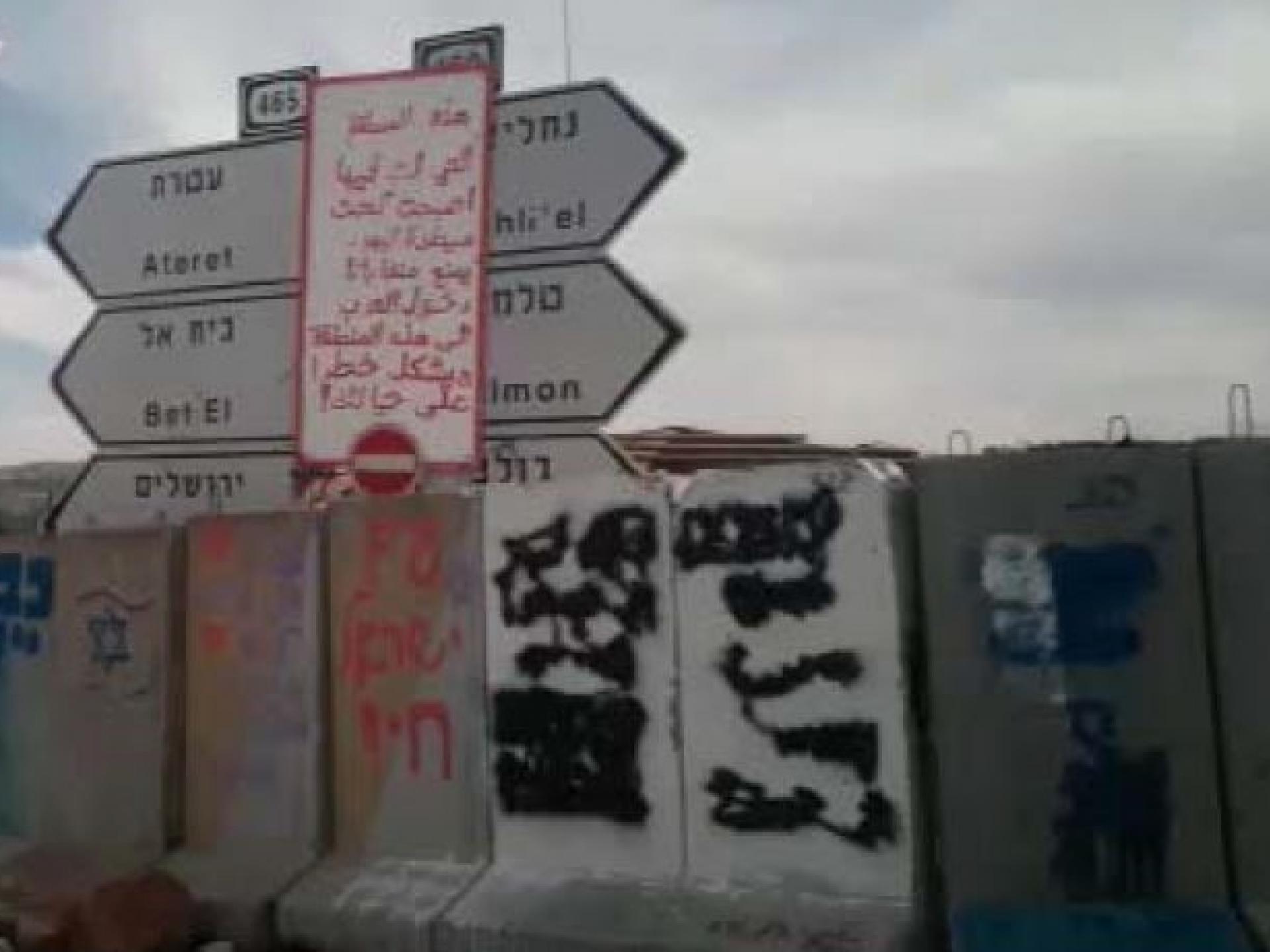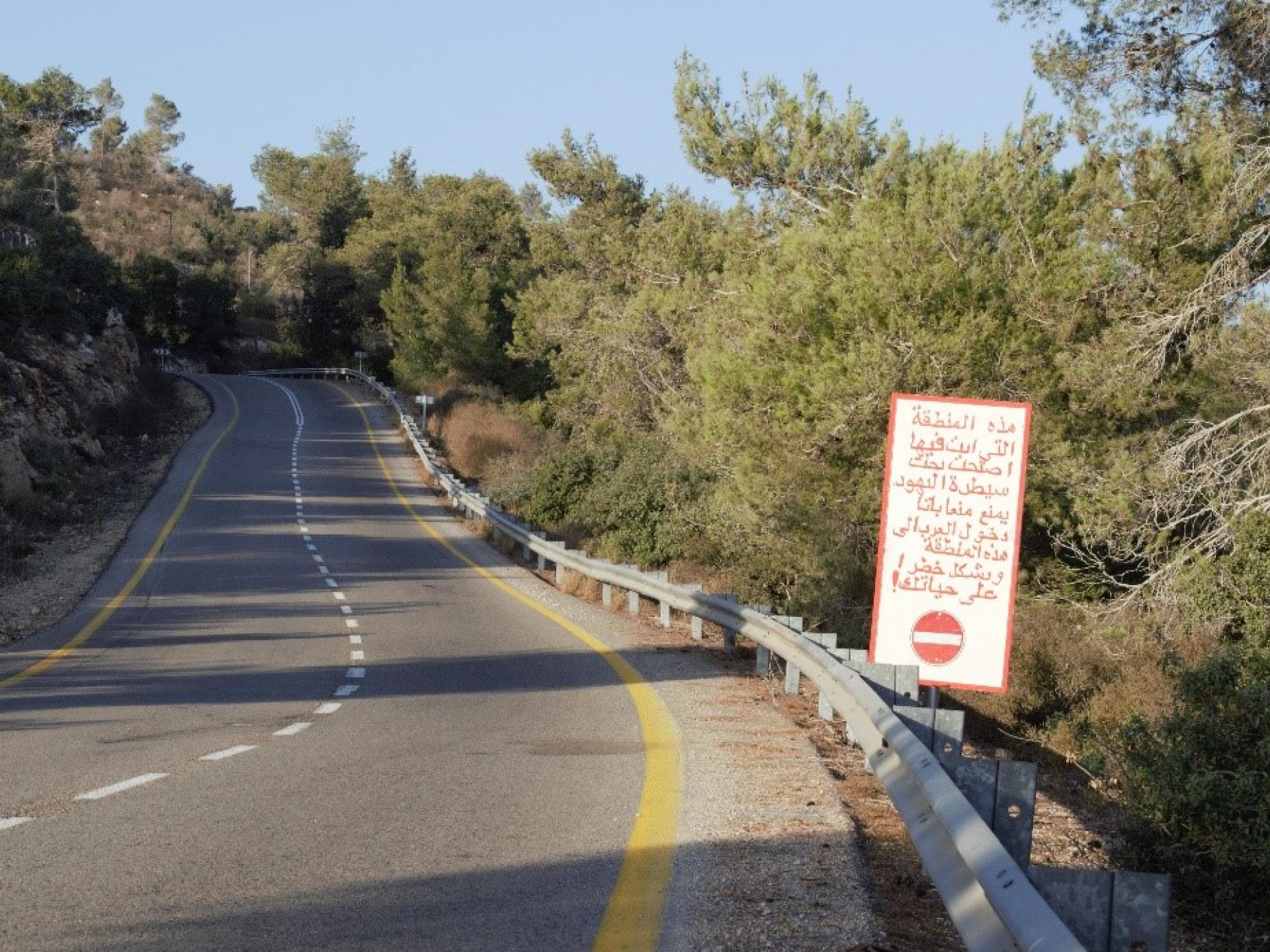Tour report in the project “Caged Makams (Muslim Holy Places)


First we planned to leave the Rosh Ha’Ayin train station directly to Bourin village to meet the man whom we had interviewed in our previous visit there and who told us about the Israeli settler-colonists harassing Bourin villagers, as well as about denying the villagers and other Palestinians access to the maqam situated nearby, on the hill above Bourin. However, we received a phone call from Attorney Neta Amar (who submitted the petition regarding road 450), who asked us to go the Halamish settler-colony area and inquire about some facts on the ground. She had been informed by the Supreme Court that road 450 was open to everyone as of December 25, 2017, including Palestinians who supposedly use it freely.
We drove to the roundabout at Umm Safa (Halamish) Junction and observed the entrance to road 450 for 5 minutes. We saw no Palestinian vehicle approach the checkpoint in order to enter road 450. Israeli cars did pass, were stopped for a very brief check and continued. On the other hand, we noticed a large sign in Arabic forbidding entrance of Palestinian vehicles. This sign, we deduced, was obviously placed there by settler-colonists, not by the army. We stopped to be checked by the soldiers and asked about the sign. They claimed that the Palestinian going through this checkpoint undergo exactly the same check that we do.
A similar sign was placed by settler-colonists on road 450 near the Deir Nizam Junction. Photographed on August 15, 2017, after the murder in Halamish.
At the second checkpoint near the road to Deir Nizam we saw plastic barriers painted red. We stopped a car coming from Deir Nizam with 4 young Palestinians and they told us that this sign has been there since December 24, 2017, and that they do not go through the checkpoint towards road 450, fearing the reactions of settler-colonists at the checkpoint. On the way to Deir Nizam on road 450 we noticed trees uprooted along the road that were part of a larger wooded area (I believe they were Eucalyptus trees). From there we drove on to Nabi Salah to meet Abu Husam. We got his name from Attorney Neta Amar. He is a resident of Nabi Salah, is fluent in Hebrew and English, and from the stories he told us and the pictures we saw hanging on his living-room wall we understood that he was and still is active in organizing the Nabi Salah demonstrations against the Separation Fence and the Occupation in general. Abu Husam owns 18 dunams of olive tree groves which can only be accessed by road 450, and since the end of the olive harvest season he has not been allowed to reach his land. He does not know of an “agricultural gate” specific for his area and how he can go on tending his trees (pruning, clearing weeds etc.).
From Nabi Salah we continued directly to Bourin. We bought a pack of sweets and pastries at a new shop in Huwarra that we had not known before.
At Bourin we were welcomed by Samir and his wife Dukha. They have two grown daughters who are studying and doing well. It’s great to meet the young generation of Palestinians who are out to get an education and a challenging profession. Samir was interviewed about Maqam Abu Isma’il, which Bourin and Madama villagers used to frequent and is presently out of bounds for them because of the settler-colonists and because of neglect. Samir’s house is built on the natural local bedrock. It is an ancient house that used to be extremely handsome.
We considered it important to maintain our contact with Samir and his wife Dukha, and update them about what we intend to do with the information we are accumulating regarding the caged and neglected maqams. We heard from him about the settler-colonists of Yitzhar and Har Beracha who harass the Bourin villagers. Samir took us to a house at the edge of the village, home of a young woman and her mother. Because the house is isolated, the settler-colonists approach it, climb to its roof and manage to really scare both women. We raised a few ideas how to prevent such harassment in the future.
Our guests could not stop admiring the natural human ties with have with Palestinians. At first they were quite afraid to enter villages with us, fear that results from the brainwashing Israelis receive via the media about the goings-on in the Occupied Territories. We were glad to be able to refute their fears.
It was evening, we left Bourin as sunset painted the sky pink and the view was spectacular. Some sights in nature cannot be erased even by the wicked Occupation, the cruelty of settler-colonists and the ‘helpless’ army.
